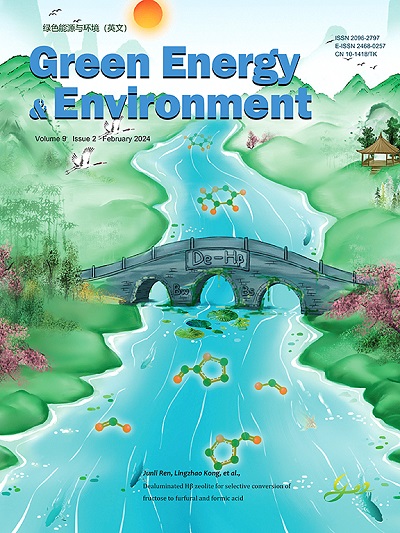碳化铁催化剂活性位点微环境驱动的 CO 加氢转化
IF 10.7
1区 工程技术
Q1 CHEMISTRY, PHYSICAL
引用次数: 0
摘要
从根本上理清涉及多个活性中心的碳化铁催化剂之间的结构-活性关系,以了解 CO 加氢转化过程的反应机理,仍然是一个巨大的挑战。本研究发现,电子特性和几何效应这两大微环境因素对涉及多个晶相上活性位点的 CO 加氢转化机理具有综合影响。活性位点表面铁原子的巴德电荷对一氧化碳活化途径具有引导作用,而活性位点的空间构型则极大地影响了一氧化碳活化的能垒。虽然有缺陷的表面更有利于一氧化碳的活化,但有缺陷的位点并不是解离一氧化碳的唯一位点,因为一氧化碳总是倾向于在更大的范围内解离。微环境的这种协同效应也发生在 CO 转化过程中。相对平坦构型的表面 C 原子更有可能形成甲烷,而活性位点的电子特性可以有效地描述 C-C 耦合过程,并区分耦合机制。本文章由计算机程序翻译,如有差异,请以英文原文为准。
CO hydrogenation conversion driven by micro-environments of active sites over iron carbide catalysts
Essentially clearing the structure–activity relationship between iron carbide catalysts involving multiple active centers to understand the reaction mechanism of CO hydrogenation conversion process is still a great challenge. Here, two main micro-environment factors, namely electronic properties and geometrical effects were found to have an integrated effect on the mechanism of CO hydrogenation conversion, involving active sites on multiple crystal phases. The Bader charge of the surface Fe atoms on the active sites had a guiding effect on the CO activation pathway, while the spatial configuration of the active sites greatly affected the energy barriers of CO activation. Although the defective surfaces were more conducive to CO activation, the defective sites were not the only sites to dissociate CO, as CO always tended to dissociate in a wider area. This synergistic effect of the micro-environment also occurred during the CO conversion process. Surface C atoms on relatively flat configurations were more likely to form methane, while the electronic properties of the active sites could effectively describe the C-C coupling process, as well as distinguish the coupling mechanisms.
求助全文
通过发布文献求助,成功后即可免费获取论文全文。
去求助
来源期刊

Green Energy & Environment
Energy-Renewable Energy, Sustainability and the Environment
CiteScore
16.80
自引率
3.80%
发文量
332
审稿时长
12 days
期刊介绍:
Green Energy & Environment (GEE) is an internationally recognized journal that undergoes a rigorous peer-review process. It focuses on interdisciplinary research related to green energy and the environment, covering a wide range of topics including biofuel and bioenergy, energy storage and networks, catalysis for sustainable processes, and materials for energy and the environment. GEE has a broad scope and encourages the submission of original and innovative research in both fundamental and engineering fields. Additionally, GEE serves as a platform for discussions, summaries, reviews, and previews of the impact of green energy on the eco-environment.
 求助内容:
求助内容: 应助结果提醒方式:
应助结果提醒方式:


